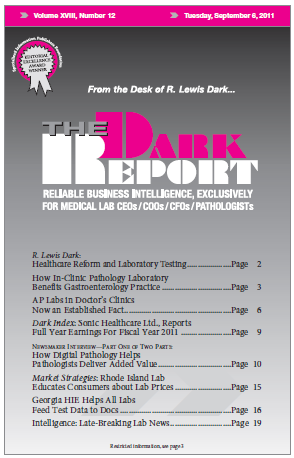CEO SUMMARY: In Manassas, Virginia, a five-physician gastroenterology group is using its in-clinic anatomic pathology laboratory to advance patient care, while boosting revenue associated with this ancillary service. In this exclusive interview, the group’s physician business leader shares the different ways that this in-house pathology service benefits both patients and physicians. Patients like the faster …
How In-Clinic Path Lab Benefits GI Practice Read More »
To access this post, you must purchase The Dark Report.


